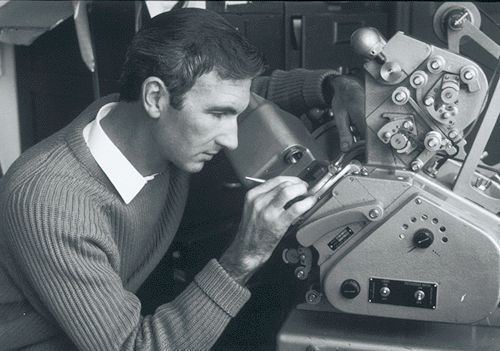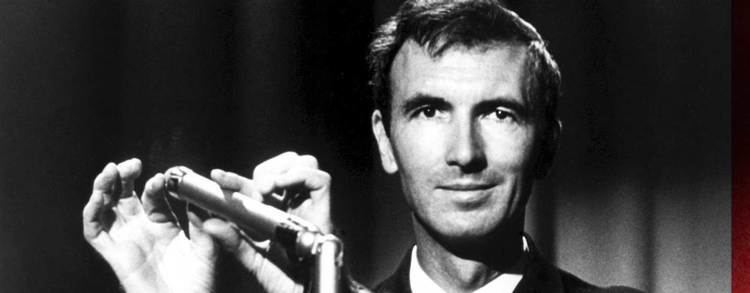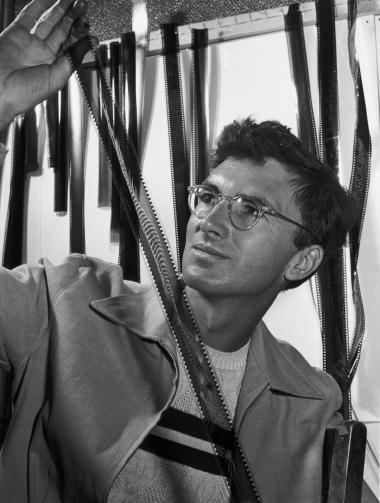Years active 1933 - 1987 Partner(s) Guy Glover (1937-87) | Name Norman McLaren Role Animator | |
 | ||
Occupation Animatordirectorproducer Books The drawings of Norman McLaren, The Art of Sea Trout Fishing, Georges Melies: first wizard of cinema Parents William McLaren, Jean Smith McLaren Movies Neighbours, Begone Dull Care, Pas de deux, Blinkity Blank, Synchromy Similar People | ||
Norman mclaren bio animation
Norman McLaren, (11 April 1914 – 27 January 1987) was a Scottish/Canadian animator, director and producer known for his work for the National Film Board of Canada (NFB). He was a pioneer in a number of areas of animation and filmmaking, including hand-drawn animation, drawn-on-film animation, visual music, abstract film, pixilation and graphical sound.
Contents
- Norman mclaren bio animation
- Animation norman mclaren s pas de deux
- Early life
- GPO Film Unit
- Solomon Guggenheim Foundation
- NFB
- UNESCO
- Legacy
- Birth centenary events
- Lifetime achievement awards
- Awards for McLarens films
- Award nominations
- Personal life
- References

His awards included an Oscar for the Best Documentary in 1952 for Neighbours, a Silver Bear for best short documentary at the 1956 Berlin International Film Festival Rythmetic and a 1969 BAFTA Award for Best Animated Film for Pas de deux.

Animation norman mclaren s pas de deux
Early life

McLaren was born in Stirling, Scotland and studied set design at the Glasgow School of Art. His early experiments with film and animation included actually scratching and painting the film stock itself, as he did not have ready access to a camera. His earliest extant film, Seven Till Five (1933), a "day in the life of an art school" was influenced by Eisenstein and displays a strongly formalist attitude.

McLaren's next film, Camera Makes Whoopee (1935), was a more elaborate take on the themes explored in Seven Till Five, inspired by his acquisition of a Ciné-Kodak camera, which enabled him to execute a number of 'trick' shots. McLaren used pixilation effects, superimpositions and animation not only to display the staging of an art school ball, but also to tap into the aesthetic sensations supposedly produced by this event.
His two early films won prizes at the Scottish Amateur Film Festival, where fellow Scot and future NFB founder John Grierson was a judge.
GPO Film Unit
Grierson, who was at that time head of the UK General Post Office film unit, saw another of his movies at an amateur film festival and took interest. He hired McLaren for the GPO after his studies, following a stint as cameraman on Defence of Madrid, Ivor Montagu’s documentary on the Spanish Civil War. McLaren worked at the GPO from 1936 to 1939, making four films including: Book Bargain (1937), Mony a Pickle and Love on the Wing (1938), and News for the Navy (1938).
Solomon Guggenheim Foundation
McLaren then moved to New York City in 1939, just as World War II was about to begin in Europe. With a grant from the Solomon Guggenheim Foundation, he worked in New York until 1941, making four drawn-on-film animated works: Boogie-Doodle (1940), along with Dots, Loops and Stars and Stripes.
NFB
At the invitation of Grierson, he moved to Canada in 1941 to work for the National Film Board, to open an animation studio and to train Canadian animators. Upon McLaren's arrival in Canada, Grierson asked him to direct a promotional film reminding Canadians to mail their Christmas cards early, Mail Early (1941). He then worked on animated shorts as well as maps for Allied propaganda documentary films, followed by his War Bonds campaign films: V for Victory (1941), 5 for 4 (1942), Hen Hop (1942) and Dollar Dance (1943).
As of 1942, McLaren could no longer keep up with the demands for animation at the fast-growing NFB, and he was asked by Grierson to recruit art students and create a small animation team—a task made more difficult because many young students had gone off to fight in the war. McLaren found recruits for his fledgling animation unit at the École des beaux-arts de Montréal and the Ontario College of Art, including René Jodoin, George Dunning, Jim McKay, Grant Munro and his future collaborator, Evelyn Lambart. McLaren trained these emerging animators, who would all work on cartoons, animated cards and propaganda documentaries before going on to make their own films. Studio A, the NFB's first animation studio, formally came into existence as of January 1943, with McLaren as its head.
During his work for the NFB, McLaren created his most famous film, Neighbours (1952), which has won various awards around the world, including the Canadian Film Award and the Academy Award. Besides the brilliant combination of visuals and sound, the film has a very strong social message against violence and war. In his early period in Canada, McLaren spent considerable time developing the animation department of the board.
UNESCO
In addition to film, McLaren worked with UNESCO in the 1950s and 1960s on programs to teach film and animation techniques in China and India. His five part "Animated Motion" shorts, produced in the late 1970s, are an excellent example of instruction on the basics of film animation.
Legacy
McLaren is remembered for his experiments with image and sound as he developed a number of groundbreaking techniques for combining and synchronizing animation with music.
The National Film Board honoured McLaren by naming its Montreal head office building the Norman McLaren Building. The Montreal borough of Saint-Laurent, which is home to the NFB, has also honoured McLaren by naming a borough district after him.
In 2006, he was the subject of a short animated documentary McLaren's Negatives. Also in 2006, the Film Board marked the 65th anniversary of NFB animation with an international retrospective of McLaren's restored classics and a new DVD box set of his complete works.
In June 2013, the NFB released an iTunes app entitled "McLaren’s Workshop," allowing users to create their own films using animation techniques utilized by McLaren and providing access to over fifty of his films.
From 1 to 10 June 2018, Robert Lepage, principal dancer Guillaume Côté and the National Ballet of Canada will stage a ballet entitled Frame by Frame, based on McLaren's life and work.
Birth centenary events
The 100th anniversary of the birth of McLaren was marked by a project entitled "McLaren Wall-to-Wall" in Montreal's Quartier des Spectacles entertainment district, with short films inspired by McLaren works Neighbours, Begone Dull Care, Synchromy and Spheres projected onto local landmarks.
McLaren's centenary was also celebrated in Scotland with the McLaren 2014 Programme of screenings, exhibitions, events and animation workshops. The Programme was a key focus within the 68th Edinburgh International Film Festival in June, and ran through to the end of the XX Commonwealth Games in Glasgow in August. The McLaren 2014 Programme was managed by the Centre for the Moving Image, working in partnership with the National Film Board of Canada, and over 20 partners in Scotland and the UK.
Lifetime achievement awards
In 1968, he was made an Officer of the Order of Canada and promoted to Companion in 1973. In 1977, he received an honorary doctorate from Concordia University. In 1982, he was the first anglophone to receive the Prix Albert-Tessier, given to persons for an outstanding career in Québec cinema.
In 1986, he received a Lifetime Achievement Award at the World Festival of Animated Film - Animafest Zagreb.
In 2009, McLaren's works were added to UNESCO's Memory of the World Programme, listing the most significant documentary heritage collections in the world, joining such works as the Gutenberg Bible and The Wizard of Oz.
Awards for McLaren's films
Award nominations
Personal life
McLaren's longtime partner was fellow NFB director Guy Glover, whom he met at the ballet in London in 1937. The two men remained in a committed relationship until McLaren’s death.
